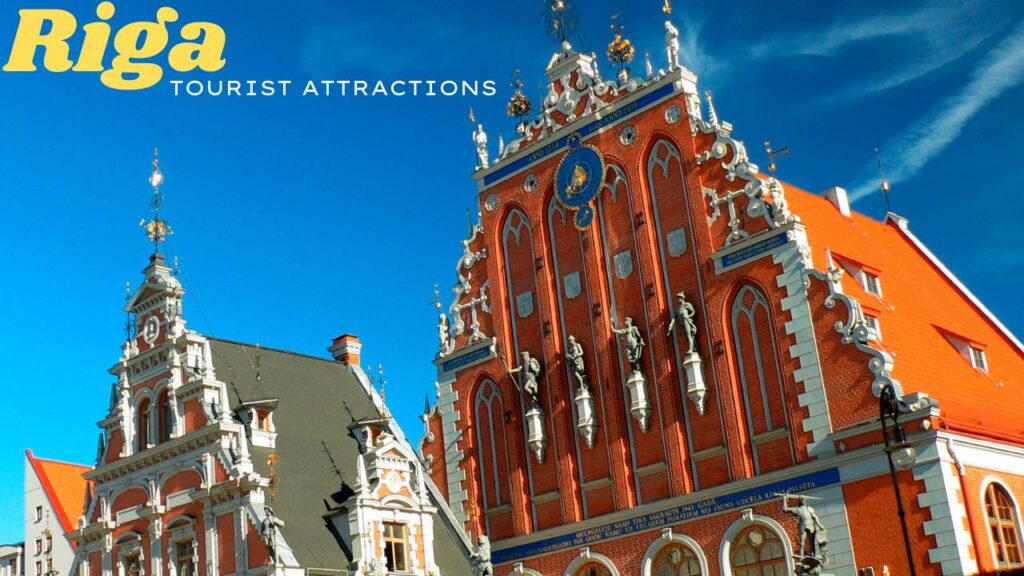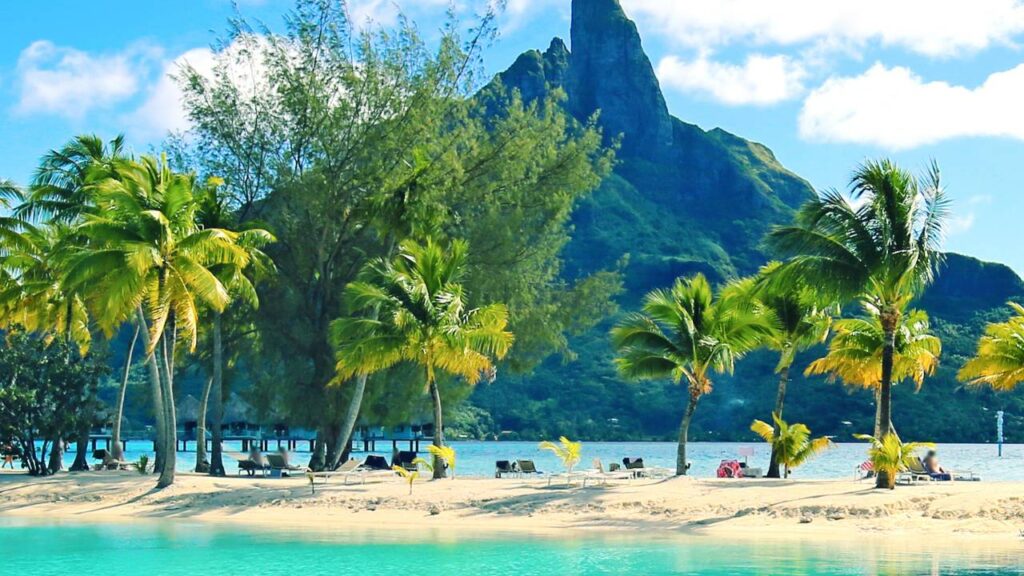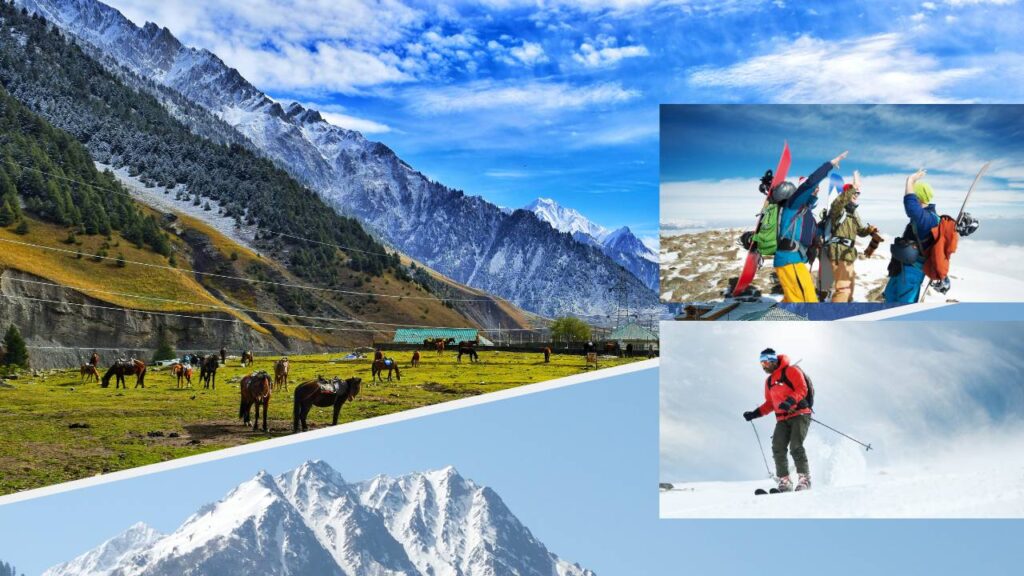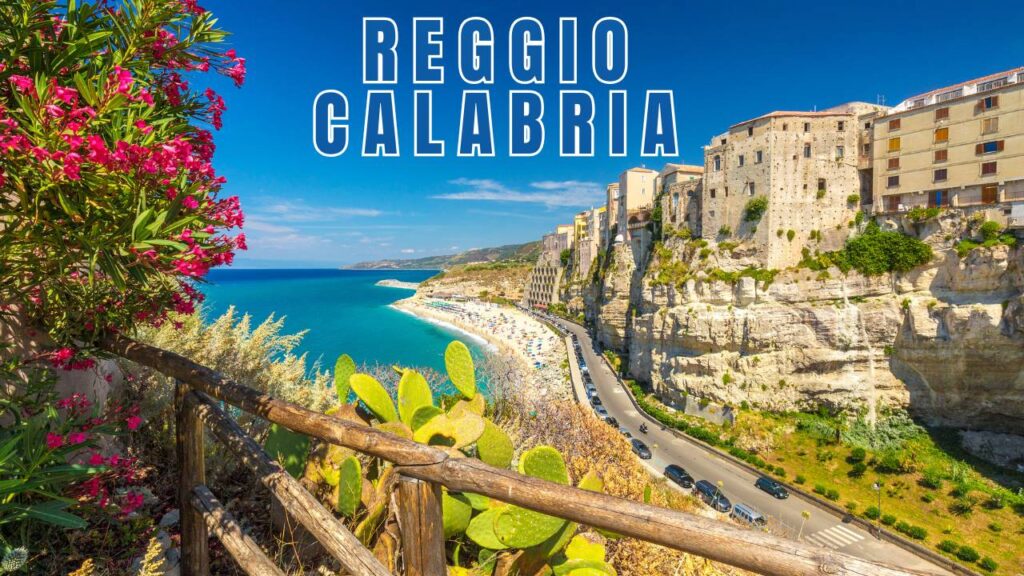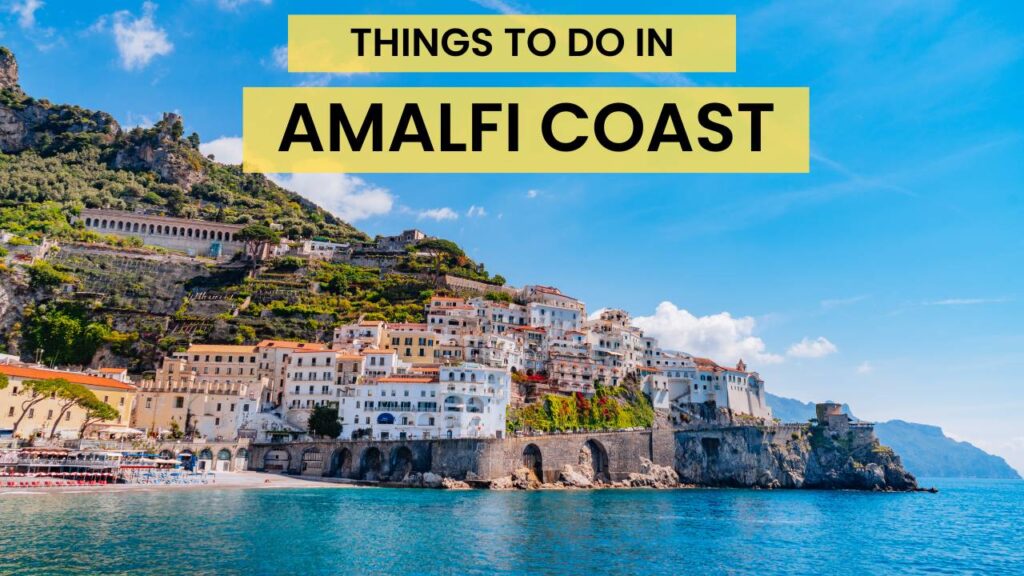Pick top Riga tourist attractions and must-do activities in Latvia’s vibrant capital, perfect for your next adventure!
Riga, the vibrant capital of Latvia, is one of Europe’s hidden gems, blending rich medieval history with contemporary charm. From cobblestone Old Town streets and UNESCO World Heritage architecture to bustling markets and art nouveau facades, Riga offers an unforgettable travel experience for every kind of visit. A history buff, food lover, or just a wanderer at heart, there are countless Riga tourist attractions waiting to be visited.
How to Get to Riga: A Detailed Travel Guide for Global Travelers
Getting to Riga, Latvia, is much more accessible than many travelers imagine. Whether you’re coming from North America, the UK, or elsewhere in Europe, Riga International Airport (RIX) offers a smooth and well-connected gateway into the heart of the Baltic region. Below is everything you need to know about getting to this charming capital city.
International Access: Flights to Riga
Riga International Airport (RIX) – Gateway to the Baltics
Riga International Airport is the largest and busiest airport in the Baltic states, serving as a major hub for airBaltic. Located just 10 kilometers (about 6 miles) from the city center, RIX handles millions of passengers annually and connects Riga to over 100 destinations across Europe, the Middle East, and seasonally, North America.
1. Traveling from the United States
Direct year-round flights from the U.S. to Riga are currently not available from most American cities. It’s still convenient to reach Riga by making one-stop connections through key European airline hubs. Common transfer cities include:
- Frankfurt (FRA) – via Lufthansa or United Airlines
- Amsterdam (AMS) – via KLM or Delta
- Helsinki (HEL) – via Finnair
- Copenhagen (CPH) or Oslo (OSL) – via SAS
During summer months, Riga occasionally offers seasonal flights from cities like New York (JFK) through airBaltic or other charter services, though these routes are limited and should be booked well in advance.
For most travelers from the U.S., the total travel time ranges from 12 to 18 hours, including layovers. Be sure to check visa requirements—U.S. citizens can stay in Latvia (and Schengen Area countries) visa-free for up to 90 days within a 180-day period.
2. Traveling from Canada
Flights from Canada to Riga generally require one or two connections, as there are no year-round direct routes from major Canadian cities. Seasonal charter flights are sometimes available from:
- Toronto Pearson International Airport (YYZ) – to Riga during the summer months, often operated by Latvian travel companies or airBaltic.
The most common way to get to Riga from Canada is through major European transfer hubs like:
- London Heathrow (LHR) or Gatwick (LGW)
- Frankfurt (FRA)
- Amsterdam (AMS)
Airlines such as Air Canada, Lufthansa, KLM, and British Airways offer excellent connectivity. Expect a total journey time of 11 to 16 hours, depending on layover duration and departure city.
3. Traveling from the United Kingdom
UK has excellent direct connectivity with Riga, making it one of the most convenient starting points for travelers heading to Latvia.
- London (Luton, Stansted, Gatwick, and Heathrow) – Multiple daily direct flights by Ryanair, Wizz Air, and airBaltic.
- Manchester – Direct flights with Ryanair or airBaltic several times a week.
- Birmingham and Edinburgh – Seasonal or frequent direct flights via low-cost carriers.
UK travelers benefit from low-cost airline options and frequent departures, often finding round-trip tickets for under £100 when booked in advance. Flight times typically range from 2.5 to 3 hours.
Due to the UK’s exit from the EU, UK citizens should ensure their passport has at least six months validity, and they may be required to show proof of onward travel or accommodation.
4. Traveling from Europe
Riga is very well connected to almost every European capital and major city. Direct flights operate daily from:
- Germany (Berlin, Frankfurt, Munich)
- France (Paris, Nice)
- Scandinavia (Stockholm, Oslo, Copenhagen)
- Eastern Europe (Warsaw, Prague, Bucharest, Vilnius)
Budget airlines like Ryanair, Wizz Air, and Norwegian provide competitive pricing, making Riga a popular weekend getaway destination. For travelers in nearby countries, train and bus routes to Riga are also available, especially from Lithuania and Estonia, offering affordable and scenic alternatives to flying.
Arriving in Riga: Transportation from the Airport
Landing at Riga International Airport (RIX) marks the beginning of your adventure in one of Europe’s most charming capitals. Whether you’re heading straight to a hotel in the Old Town or planning to visit the broader region of Latvia, reaching the city center from the airport is both simple and cost-effective.
Here’s a complete guide to your transport options after arrival, each offering its own set of conveniences depending on your travel style, budget, and schedule.
1. Bus Option – Budget-Friendly and Local Experience
Seeking a reliable and affordable way to reach central Riga, Bus 22 is a popular choice among both locals and tourists. The bus operates frequently, every 15 to 20 minutes, and covers the route from Riga Airport to the city center in approximately 30 minutes.
Buses are well-maintained, safe, and many are equipped with free Wi-Fi, making the ride not only comfortable but also productive if you need to catch up on emails or check your travel plans. Tickets can be purchased in advance at airport kiosks or vending machines for around €1.50, or onboard from the driver for €2.00.
Bus stops are conveniently located just outside the terminal exit, and signage in both Latvian and English makes it easy to navigate. If you’re traveling light and want to immerse yourself in the local environment right from the start, the public bus is an excellent way to begin your Riga journey.
2. Taxi & Ride-Sharing – Fast, Comfortable, and Convenient
If convenience and speed are your top priorities, especially after a long flight, then a taxi or ride-sharing service will likely be your preferred option. Taxis are readily available just outside the arrivals terminal and offer a direct, door-to-door connection to any hotel or location within the city center or Old Town.
Typical fare for a taxi ride to central Riga ranges from €15 to €20, depending on traffic conditions and the exact location of your accommodation. Taxis in Riga are generally safe, and most drivers speak basic English, especially those operating from the airport zone.
For even greater convenience and potentially lower prices, consider using ride-sharing services like Bolt or Yandex Go, both of which are widely used across Latvia. These apps provide real-time fare estimates, driver ratings, and GPS tracking, making the entire process smoother and more transparent. Ride-sharing can reduce the cost slightly compared to traditional taxis and often offers faster pickup times, especially during peak hours or in poor weather conditions.
The travel time by car from Riga Airport to the city center is usually between 15 and 20 minutes, although this can vary during rush hour. If you’re arriving late at night or with heavy luggage, this is easily the most stress-free option.
3. Car Rentals – Freedom to visit Latvia at Your Own Pace
If Riga is just your starting point and you’re planning to visit more of Latvia’s breathtaking countryside, renting a car directly from the airport is an excellent decision. Riga International Airport hosts several international and local rental agencies conveniently located within or adjacent to the arrivals terminal. Reputable names include:
- Avis
- Budget
- Sixt
- Hertz
- Europcar
Rental prices are quite reasonable, particularly if booked in advance or during non-peak seasons. Rates typically start from €20–€35 per day, depending on the car type and rental duration.
Driving in Latvia is generally straightforward. Roads are well-maintained, signage is clear and often bilingual, and traffic is light compared to other European countries. A rental car gives you the flexibility to visit stunning off-the-beaten-path destinations such as:
- Jūrmala, the popular seaside resort town just 25 minutes from Riga
- Sigulda, the gateway to Gauja National Park with its castles and hiking trails
- Cēsis, a medieval town with preserved fortresses and cobbled streets
- Kuldīga, known for Europe’s widest waterfall and charming small-town vibes
Do note that Latvia drives on the right-hand side, and EU/EEA driver’s licenses are valid for use without additional permits. If you’re visiting from the USA or Canada, an International Driving Permit (IDP) is recommended in addition to your home country license.
Best Time to Visit Riga Latvia
Riga has a varied climate that offers something special throughout the year. Choosing the best time to visit depends on your travel preferences.
Spring (April to June)
This is a beautiful season in Riga, with blooming parks, mild temperatures, and fewer crowds. Temperatures range between 10°C to 20°C. It’s a great time to enjoy Riga tourist attractions in peace, especially the botanical gardens and open-air cafes.
Summer (July to August)
Summer is peak tourist season, and for good reason. With temperatures between 20°C and 27°C, the city comes alive with music festivals, open-air events, and buzzing nightlife. Make sure to book accommodations early if you’re visiting during this period.
Autumn (September to November)
This season is ideal for budget-conscious travelers. The city transforms with autumn foliage, especially in places like Kronvalda Park. Expect temperatures between 5°C to 15°C. It’s a cozy time to visit museums and art galleries.
Winter (December to February)
If you’re drawn to Christmas markets and snow-covered rooftops, Riga in winter is magical. Temperatures can drop to -5°C or lower, but the festive atmosphere, warm mulled wine, and twinkling lights make it worthwhile.
Top Tourist Attractions in Riga, Latvia: An In-Depth Travel Guide
From medieval wonders to Soviet-era monuments, Riga offers a diverse collection of sights that tell the story of the city’s rich past and exciting present. Below are some of the top Riga tourist attractions you absolutely shouldn’t miss:
- Old Town (Vecrīga)
- Art Nouveau District
- Riga Central Market
- Freedom Monument
- Latvian National Museum of Art
- Riga Castle
Old Town (Vecrīga): A Timeless Medieval Heart
Riga’s Old Town is the vibrant and historical core of the city, a captivating blend of Gothic spires, Baroque façades, and centuries-old cobblestone streets. Walking through Vecrīga feels like stepping into a living museum, where every corner whispers stories of traders, craftsmen, and conquerors. As a UNESCO World Heritage Site, this area has been carefully preserved to reflect its medieval origins, yet it pulses with modern life through its quaint cafés, art galleries, and street performances.

1. House of the Blackheads
This eye-catching landmark is one of Riga’s most iconic architectural masterpieces. Originally erected in the 14th century as a guild house for unmarried German merchants, it symbolizes Riga’s mercantile power in the Hanseatic League. The original building was destroyed during World War II, but it was painstakingly reconstructed in the late 1990s, bringing back the grandeur of its ornate façade. The intricacies of its statues, gilded clock, and coats of arms reflect the opulence of medieval society and stand as a striking backdrop for countless photos and cultural events.
2. Riga Cathedral (Doma Baznīca)
Cathedral is a monumental symbol of Riga’s spiritual and cultural evolution, with architectural elements spanning Romanesque, Gothic, Baroque, and Art Nouveau styles. It houses one of Europe’s most magnificent pipe organs, boasting over 4,700 pipes, which still resonates through the sacred space during regular performances. Its interior, filled with soaring arches and historic tombstones, offers a quiet, contemplative retreat from the bustle outside, while the adjacent square often hosts music festivals and artisan markets.
3. St. Peter’s Church
Towering over the city, St. Peter’s Church provides one of the best panoramic views in Riga from its 123-meter-high observation platform. The climb (or elevator ride) to the top is rewarded with breathtaking vistas of the Daugava River, Old Town rooftops, and beyond. The church itself, first mentioned in the 13th century, showcases a mix of Romanesque and Gothic design and frequently serves as a venue for art exhibitions and classical concerts.
4. Atmosphere of the Old Town
Every visit to Riga’s Old Town reveals something new: a hidden courtyard filled with flowers, a violinist playing under a lantern, or a scent of fresh pastries wafting from a hidden bakery. In winter, the area transforms into a fairy-tale Christmas market adorned with twinkling lights and handmade ornaments. During summer, it buzzes with festivals, open-air dining, and sunset strolls. Vecrīga is not just a place to see—it’s a place to feel.
Art Nouveau District: Living Architectural Gallery
Riga is known worldwide for its unparalleled collection of Art Nouveau architecture. This district, especially concentrated around Alberta and Elizabetes streets, represents a period when the city was flourishing, both economically and culturally, in the early 20th century. These buildings don’t merely serve residential or commercial purposes—they are masterpieces of urban design, telling stories through their curves, motifs, and ornamentation.

1. Alberta iela
Alberta Street is a visual spectacle where nearly every building seems alive with character. Created by Mikhail Eisenstein, father of the legendary filmmaker Sergei Eisenstein, these façades are draped with mythological creatures, ethereal female faces, elegant flowers, and symbolic shapes. The attention to detail in each structure demands slow, deliberate observation to catch every nuance.
2. Elizabetes iela
Though more understated than Alberta iela, Elizabetes iela showcases another layer of Art Nouveau—more refined, blending local symbols and nature-inspired aesthetics. It’s perfect for those who want to experience elegance without the theatrical boldness of Alberta’s flamboyance.
3. Cultural Relevance
This architectural movement was not merely decorative—it reflected the national awakening of the Latvian identity. Art Nouveau here intertwined folklore, patriotism, and innovation, making it more than just an artistic expression. Today, it is preserved not only as beautiful architecture but as a cultural statement from a proud, independent people.
3. Riga Central Market: Feast for the Senses
Located just a short walk from the Old Town, the Riga Central Market is one of the largest and most unique markets in Europe. Housed in five colossal pavilions that once served as German Zeppelin hangars, the market is an architectural and cultural wonder. Inside, it offers a sensory overload of aromas, colors, and local sounds that reflect Latvia’s diverse heritage.

1. Local Treasures
Each pavilion focuses on specific products: fish, meat, dairy, produce, and baked goods. You can sample traditional Latvian items like smoked eel, marinated herring, and artisan cheeses, or buy fresh fruit, herbs, and rye bread baked that morning. Outside the pavilions, vibrant stalls sell everything from flowers to handmade crafts and traditional knitwear.
2. Culinary Experience
Visitors should not miss the chance to try the legendary Riga Black Balsam, a strong herbal liqueur with centuries of history. The market also has small eateries and vendors offering street food like piragi (stuffed buns) and potato pancakes, making it an ideal spot for both shopping and eating.
3. Local Life
Unlike tourist-heavy attractions, the Central Market offers a glimpse into real Latvian daily life. You’ll hear vendors chatting in Latvian and Russian, see elderly locals bargaining for produce, and perhaps even witness a spontaneous folk music performance outside. It’s raw, authentic, and unforgettable.
4. Freedom Monument: Latvia’s Symbol of Sovereignty
The Freedom Monument is not just a statue—it is the heart of Latvian national pride. Erected in 1935 and standing 42 meters tall, it commemorates soldiers who fell during Latvia’s War of Independence from 1918 to 1920. Designed by Kārlis Zāle, it features a solemn, powerful statue of a woman holding three golden stars aloft, representing Latvia’s three historic regions.

1. Political Symbolism
During Soviet occupation, public acknowledgment of the monument was suppressed, yet it stood untouched—a silent act of resistance and a secret site of patriotic remembrance. After Latvia regained independence in 1991, it regained its role as a national beacon of freedom and unity.
2. Daily Rituals
The site is still guarded by the Latvian National Guard, and the changing of the guard ceremony takes place every hour. This event is dignified and solemn, symbolizing ongoing respect and vigilance for the nation’s hard-won freedom. Visitors are encouraged to observe with quiet reverence.
5. Latvian National Museum of Art: Treasure Trove of Culture
Housed in a majestic 19th-century building, the Latvian National Museum of Art is a journey through Latvia’s artistic evolution. Located just beyond the Old Town, the museum is the central institution for Latvian visual culture and showcases a wide collection spanning several centuries.

1. Exhibitions and Highlights
Art lovers will find the works of national greats like Janis Rozentāls, known for his romantic symbolism; Vilhelms Purvītis, who captured Latvia’s luminous landscapes; and even original pieces by Mark Rothko, a globally renowned abstract expressionist born in Daugavpils, Latvia.
2. Rooftop Views
After exploring the exhibitions, visitors can access the glass-roofed dome, which provides a panoramic view of the city. On clear days, the rooftop is a serene place to reflect on the artworks while gazing at Riga’s skyline.
6. Riga Castle: From Fortress to Presidential Palace
Riga Castle, standing gracefully along the Daugava River, has been part of the city’s landscape since the 14th century. Originally a fortress for the Livonian Order, it evolved over centuries to become a symbol of power and authority. Today, it serves as the official residence of Latvia’s President.

1. Historical Evolution
While not as ornate as some other landmarks, the castle’s long history is woven into the foundations of Latvian governance. It has survived sieges, reconstructions, and occupations, symbolizing resilience and continuity. Parts of the castle are open to the public, with exhibitions related to Latvia’s statehood and history.
2. Strategic Setting
Its location by the river once gave it strategic military importance. Now, it offers visitors a scenic view, especially at sunset when the castle’s white walls glow and the water reflects the city lights. While the interiors are more administrative, the surrounding park and riverside promenade provide a lovely walk.
Top Things to Do in Riga, Latvia: Beyond the Guidebooks
While sightseeing is a big part of any trip, there’s much more to experience in Riga beyond just visiting attractions.
Cruise the Daugava River
Gliding along the Daugava River is one of the most peaceful ways to experience Riga. From medieval spires to striking modern architecture like the Castle of Light, the city skyline unfolds like a storybook—especially at sunset. These cruises usually last about an hour, passing under iconic bridges and offering multi-language commentary that brings the city’s history to life. It’s a relaxing way to take in Riga from a fresh, serene perspective.
Join a Walking Tour
Walking tours in Riga are more than sightseeing—they’re storytelling journeys. Whether you’re into history, street art, or ghost tales, local guides reveal the hidden layers of Riga, from medieval legends like the Cat House to the artistic gems of the Art Nouveau district. These tip-based tours foster real conversation and let you see the city through a local’s eyes.
Unwind in Bastejkalna Park
Right beside the Freedom Monument, Bastejkalna Park offers a green escape with swan-filled canals, shady trees, and scenic bridges. In spring and summer, flowers burst into color, creating the perfect setting for a picnic, quiet stroll, or paddleboat ride. It’s a favorite spot for both locals and travelers to slow down and enjoy Riga’s softer side.
Taste Traditional Latvian Cuisine
Latvian food is comforting, hearty, and deeply rooted in the land. In cozy spots like Lido or Folkklubs Ala Pagrabs, you’ll savor classics like grey peas with bacon, cold beet soup, rich stews, and rye bread. For dessert, try rye bread pudding with berries, and don’t miss a shot of Riga Black Balsam—a strong herbal liqueur that tells its own story.
Visit the KGB Museum (Corner House)
A visit to the KGB Museum is haunting but essential. Set in the actual former Soviet headquarters, this museum walks you through interrogation rooms, prison cells, and deeply personal stories of those who suffered here. It’s a powerful, sobering reminder of Latvia’s fight for freedom and the resilience of its people.
Escape to Jūrmala Beach
Just 30 minutes from Riga, Jūrmala offers a perfect seaside escape. With white sand beaches, wooden villas, and relaxing spas, it’s ideal for a day trip. Swim in the shallow waters of Majori, stroll the lively promenade, or Dzintari Forest Park with its treetop trails and panoramic views. It’s the breezy, beachy counterpart to Riga’s urban charm.
FAQs
1. What are the must-see attractions in Riga for first-time visitors?
For first-timers, start with Old Town (Vecrīga), the heart of the city, filled with cobblestone streets and medieval architecture. Don’t miss the House of the Blackheads, St. Peter’s Church, and Riga Cathedral. The Art Nouveau district on Alberta Street is also a visual marvel. Add Riga Central Market and the Freedom Monument for a mix of local culture and history.
2. Is the Old Town walkable and how much time should I spend there?
Yes, Riga’s Old Town is completely walkable and best on foot. You can spend anywhere from half a day to a full day, depending on your pace and interests. Its compact layout is filled with historic buildings, cafés, churches, and museums within easy reach of each other.
3. What makes Riga’s Art Nouveau district unique?
Riga boasts the highest concentration of Art Nouveau architecture in Europe, with over a third of all buildings in this style. The façades are adorned with mythological creatures, flowing designs, and national symbols. Alberta iela (Albert Street) and Elizabetes iela are the best streets to enjoy, featuring masterpieces by Mikhail Eisenstein.
4. What is the best place to view Riga’s skyline?
For panoramic views of Riga, head to the observation deck of St. Peter’s Church, which offers a 360° view of Old Town, the Daugava River, and beyond. Another great spot is the Latvian Academy of Sciences building, often called the “Stalin skyscraper” or “Cake”, with a less crowded viewing platform.
5. What can I expect at Riga Central Market?
Riga Central Market is one of Europe’s largest and most authentic markets, located in old Zeppelin hangars. It’s a paradise for foodies, offering fresh produce, fish, meat, dairy, baked goods, and local treats like smoked eel, rye bread, and Latvian cheeses. It’s also a great place to experience daily local life and grab budget-friendly meals.
6. Are there any river cruises or boat tours available in Riga?
Yes, Riga offers several Daugava River cruises and canal boat tours, especially from May to October. These tours provide a unique view of the city’s historic skyline, bridges, and modern districts. Some even include audio guides or evening rides with sunset views and local drinks on board.
7. Is the Freedom Monument worth visiting?
Absolutely. The Freedom Monument is one of Riga’s most important landmarks, symbolizing Latvia’s independence and unity. It’s located between Old Town and the city center, and the changing of the guard ceremony every hour is a solemn and photogenic event. It’s also a good starting point for a walking tour.
8. Are Riga’s museums worth visiting? Which are the best?
Yes, Riga’s museums offer deep insight into its rich cultural and historical tapestry. Top picks include the Latvian National Museum of Art, Museum of the Occupation of Latvia, and the Riga Motor Museum for automobile lovers. The Latvian Ethnographic Open-Air Museum, located a bit outside the city center, is a great way to experience traditional rural life.
9. How safe is Riga for tourists exploring attractions on foot?
Riga is generally very safe for tourists, especially in well-traveled areas like Old Town, the Art Nouveau district, and around the Freedom Monument. Like any city, be mindful of your belongings, especially in crowded markets or public transport, but violent crime is extremely rare.
10. When is the best time of year to visit Riga’s tourist attractions?
The best time to visit is late spring through early autumn (May to September) when the weather is mild and ideal for walking. Summer (June–August) is peak tourist season with events, festivals, and longer daylight. December is magical for Christmas markets, especially in the Old Town, though it’s colder and snowier.
